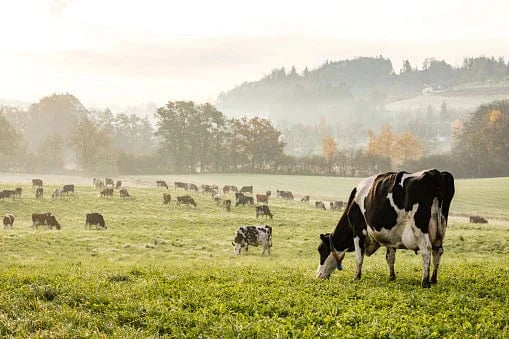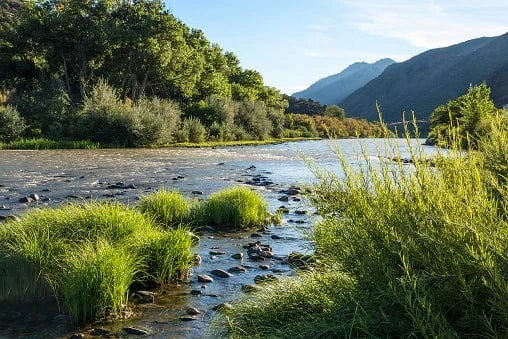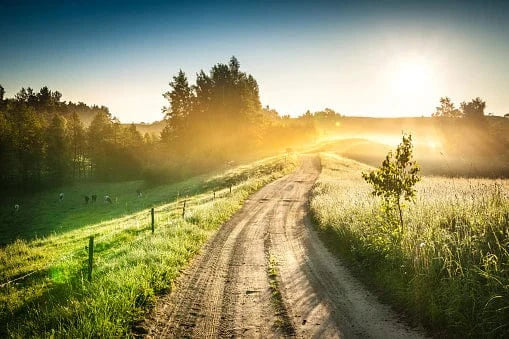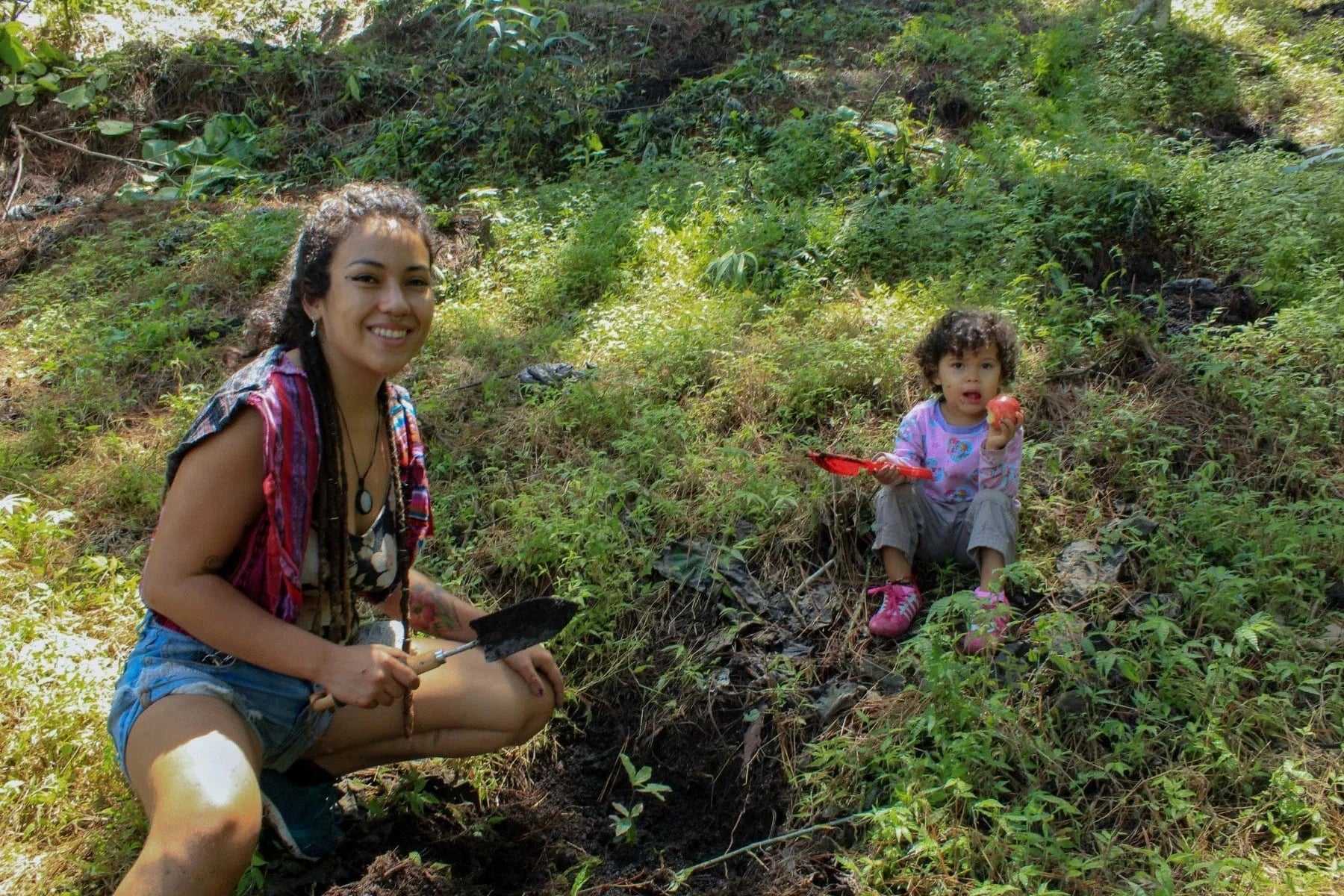
Get news, updates, & event Info delivered right to your inbox:
What is Agroforestry and Why is it Important?
If you're interested in environmental restoration and climate change solutions, then you've probably heard about sustainable agroforestry and the incredible impact it can have for farming communities and surrounding ecosystems. Before we dive into the benefits of agroforestry and the ways that One Tree Planted integrates it into select reforestation projects, let's begin by defining the term.
Agroforestry, as defined by the UN Food and Agriculture Organization (FAO), is a collective term describing land-use systems and technologies that integrate woody perennials (such as trees, shrubs, and bamboos) with agricultural crops or animals on the same area of land.
At the systems level, it’s a model of land management that integrates more sustainable methods of agricultural production with the planting of native tree species to create lasting economic benefits for farmers, as well as ecological benefits for the surrounding communities. By integrating trees on farms, or producing agricultural products in forests, farmers can diversify and sustain production to increase their income, improve nutrition, improve soil fertility, and more.
According to the USDA, for a management practice to be called agroforestry, it must satisfy the four "I"s:
- Intentional
- Intensive
- Integrated
- Interactive
From a community perspective, it's a powerful tool for empowering smallholder farmers with more reliable income, conserving primary forests in areas that are under threat of degradation for basic survival needs, reducing hunger in rural areas and so much more.

5 Benefits of Agroforestry to Show How Trees and Agriculture Work in Balance

1. Healthy Crops Support Healthy Trees
Since the rise of intensive agriculture and the green revolution, biodiversity around the world has been lost or threatened due to unsustainable farming practices. In contrast, sustainable agroforestry emphasizes managing crops in a way that supports the natural plant, animal and insect biodiversity of an area. By protecting this natural diversity of life, farmers are able to leverage natural solutions like pollinators and pest predators to enrich and protect their crops.
One of our partners, based in Guatemala, took advantage of this natural relationship by planting saplings on farms near coffee and cacao plants, which will help keep the soil and trees fertilized and free from pests.
Conversely, when agroforestry crops are planted thoughtfully and rotated regularly within the forest-farm interface, they can nourish and enrich the surrounding area, which helps native types of tree species grow stronger and more resilient.

2. Trees Provide Shelter and Food For Livestock
The presence of trees in or near livestock grazing areas benefits the animals by shading them from the sun, cooling temperatures in the surrounding microclimate, protecting them from wind and rain events, and more.
Trees also help reduce the animals’ stress by making them feel more at ease in their environment. While livestock was often considered a part of historic forest farming practices, animals are becoming less common in the agroforestry field. But when managed thoughtfully, they can play an important role in a mutually beneficial integrated agroforestry system.

3. Riparian Restoration and Conservation
In addition to providing unique habitat for specialized species, riparian areas absorb and filter sediment and debris that would otherwise make their way into waterways. When they are lost, water quality and quantity is reduced, habitat is degraded, native specialist species can be lost, soil stability is reduced, and more.
In other words, in a healthy watershed, riparian zones are an essential piece of the puzzle — and their loss or degradation could have serious implications downstream.
When trees and shrubs are planted along rivers and streams to form a riparian forest buffer, they can help stabilize riverbanks and prevent soil erosion, filter farm runoff and improve water quality, shade and slow flowing water, foster a better moisture balance in the area, and more.

4. Forest Farming
As any herbalist or forager will tell you, foods and herbs that are sustainably wildcrafted within their natural environment provide superior nutrition and medicine over their conventionally cultivated counterparts. However over harvesting is a prevalent issue in this space.
Forest farming is one way to enjoy the benefits of wild foods in a more managed way that is respectful of the ecosystem. This method involves cultivating specialty crops including fruits, nuts, mushrooms, ginseng and other medicinal herbs, woody florals, maple syrup and more under the protection of a forest canopy. To provide optimal growing conditions, forest farmers will carefully modify the existing canopy to provide optimal shade levels while retaining biodiversity and ecosystem benefits.
The forest serves as a complex natural environment for edible, floral, or medicinal crops to grow and thrive, while soil erosion and other degradation is prevented and trees can mature.

5. Eco-Stability
Agroforestry practices often focus on balancing the preservation of natural forests while also cultivating a productive agriculture system. At a time when conventional industrial agriculture is a top cause of deforestation around the world, sustainable agroforestry offers a powerful one-two punch of feeding communities and protecting the environment from further degradation.
More than that, agroforestry has the potential to regenerate soil and ground water supplies, prevent droughts, provide financial value for farmers over the long term, and so much more. When integrated in a thoughtful way, it can change lives for the better by enabling communities to live more harmoniously within the environments they call home, improving access to critical resources for all.
When a forest is properly managed through natural cycles of conservation, harvesting, and replenishment, the result is a win-win for both people and the planet.
How Does One Tree Planted Integrate Sustainable Agroforestry Into Our Projects?
We work with amazing on the ground partners to plant trees through agroforestry projects around the world. As these trees grow, they change lives and communities for the better, fostering impacts that will last for generations to come. Here are just two of our incredible agroforestry projects:

Fruit Trees Change Lives: Sustainable Agroforestry in Rural India
In 2021, we planted a total of 1,533,930 fruit trees to restore 1,553 hectares of land in rural India. The plantings were distributed across the states of Uttar Pradesh, Madya Pradesh, Maharashtra, Haryana, Rajasthan and Uttarakhand, India. We also built nurseries in strategic areas of Haryana to reduce transportation costs and improve seedling acclimatization.
As the trees grow, they'll help alleviate hunger and poverty while fighting pollution and climate change across rural India. Special emphasis was given to employing people from marginalized groups like widowed and elderly women. The plantings included a diverse mix of fruit tree species, such as guava, key lime, pomegranate, custard apple, and jackfruit.
In addition to providing social benefits, the growing trees will provide food and shelter for insects, bees, small animals, and birds. Biodiversity will also benefit from improved watershed health thanks to improved water absorption (and therefore, reduced runoff) during rain events. This will help keep local rivers clean by stabilizing soils, filtering stormwater, and more!

Women's Empowerment and Landscape Restoration in Rwanda
Between the intersection of reforestation and women's empowerment are profound opportunities to improve the lives of women and their families — and enact lasting change within local communities and environments.
While many of our reforestation projects benefit women and communities, our Kula project in Rwanda truly stands out. Through this ongoing project, we're working with our partner to provide coffee and shade trees to three communities of smallholder coffee farmers in Rwanda. The project will provide increased harvest and income, empowering over 200 coffee farmers to invest in their futures and create thriving communities.
Women farmers are also trained by expert agronomists in tree canopy management, coffee tree and variety characteristics, soil productivity, harvesting, erosion control, weeding and waste management, composting and amendment, shade trees and more. This helps ensure the long-term success of the project, improves their community standing, and more!

Integrated Coffee Agroforestry in Guatemala
In Solola, Guatemala, we planted 250,000 trees to help an estimated 5,000 independent coffee growers that were struggling to produce export quality coffee and stay afloat. To help, this project worked with them to establish a system that will provide enough shade to the coffee plants and at the same time, create chains where farmers can harvest beans and corn in the same space they grow coffee. This type of project encourages small entrepreneurs to have better product quality — and fosters a higher quality of life by entering better economic chains.
The fruit-producing trees integrated with these coffee plantations will create microclimatic conditions that favor the development of coffee and at the same time diversify the production of the farms. As the trees grow, they'll also reduce erosion, improve moisture retention, expand the tree canopy, and increase soil fertility and the amount of carbon captured.
Agroforestry is a model of sustainable land use that's imbued with incentive and value to keep forests standing. Many marginalized communities have to resort to cutting down trees simply to survive, only to suffer when water sources dry up, soil is degraded, and ecosystem services are lost. With agroforestry, they're empowered to generate income from crops while keeping forests healthy and alive!
Want to help local communities and ecosystems? Make a difference by planting trees today!
Get news, updates, & event Info delivered right to your inbox:
Related Posts
9 Sustainable New Years Resolutions
18/12/2025 by Meaghan Weeden
Inspirational Quotes About Trees
16/12/2025 by Meaghan Weeden
The 9 Oldest, Tallest, and Biggest Trees in the World
11/12/2025 by One Tree Planted
Popular On One Tree Planted
Inspirational Quotes About Trees
16/12/2025 by Meaghan Weeden
The 9 Oldest, Tallest, and Biggest Trees in the World
11/12/2025 by One Tree Planted
What Causes Deforestation?
10/07/2025 by Meaghan Weeden
Fundraising Disclosures

Be Part of the
Restoration Movement
The Grove is more than just a monthly giving program: it's a vibrant community of individuals who are dedicated to reforestation and environmental restoration on a global scale.
As a member of The Grove, you affirm your commitment to restoring forests, nurturing biodiversity, and fostering positive global change.



